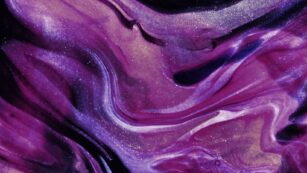In the vibrant world of contemporary art, aesthetic:nigrletccy4= emerges as a captivating movement that challenges traditional norms. This unique style intertwines cultural narratives with striking visual elements, creating a powerful dialogue on identity and expression. Artists within this genre harness bold colors and innovative techniques for online dating to evoke emotions and provoke thought.
As audiences engage with these works, they’re invited to explore deeper meanings and connections of behavioral therapy. This art form not only reflects personal experiences but also resonates with broader societal themes. By delving into the intricacies of aesthetic:nigrletccy4= art, one uncovers a rich tapestry of creativity that continues to inspire and ignite conversations across diverse communities.
Aesthetic:Nigrletccy4= Art
Aesthetic:nigrletccy4= art emerges from a blend of various cultural influences, creating a unique space within contemporary art. This movement encourages the exploration of identity, emotion, and societal issues through innovative artistic expression.
Origins and Influences
 Origins of aesthetic:nigrletccy4= art trace back to a fusion of cultural narratives and historical contexts. Influences include African diaspora experiences, post-colonial discourse, and contemporary social movements. Artists draw inspiration from traditional art forms, urban culture, and digital media, integrating these elements into their works. This amalgamation fosters a dialogue between past and present, allowing viewers to engage with diverse stories.
Origins of aesthetic:nigrletccy4= art trace back to a fusion of cultural narratives and historical contexts. Influences include African diaspora experiences, post-colonial discourse, and contemporary social movements. Artists draw inspiration from traditional art forms, urban culture, and digital media, integrating these elements into their works. This amalgamation fosters a dialogue between past and present, allowing viewers to engage with diverse stories.
Key Figures in the Movement
 Key figures in aesthetic:nigrletccy4= art play a vital role in shaping its direction.
Key figures in aesthetic:nigrletccy4= art play a vital role in shaping its direction.
-
Kara Walker: Known for her powerful silhouettes, she addresses themes of race, gender, and history.
-
David Hammons: Utilizes found objects to explore African American identity and cultural critique.
-
Yinka Shonibare: Blends Victorian fashion with African aesthetics, challenging perceptions of colonialism.
-
Theaster Gates: Focuses on community engagement through art, transforming spaces and fostering dialogue.
These artists exemplify the movement’s commitment to challenging norms and fostering meaningful conversations within society.
Characteristics of Aesthetic:Nigrletccy4= Art
Aesthetic:nigrletccy4= art showcases distinct characteristics that reflect its cultural significance. The movement’s visual elements and recurring themes create a profound impact on audiences.
Visual Elements
 Bold colors dominate aesthetic:nigrletccy4= art, drawing attention and evoking strong emotions. Artists often incorporate mixed media techniques, using materials like fabric, clay, and found objects. Innovative compositions challenge conventional layouts, creating dynamic experiences. Intricate patterns and textures enhance visual depth, inviting viewers to engage closely. Dramatic contrasts often highlight specific themes, emphasizing societal issues related to identity and race. Overall, these visual strategies foster a connection between the artwork and its audience.
Bold colors dominate aesthetic:nigrletccy4= art, drawing attention and evoking strong emotions. Artists often incorporate mixed media techniques, using materials like fabric, clay, and found objects. Innovative compositions challenge conventional layouts, creating dynamic experiences. Intricate patterns and textures enhance visual depth, inviting viewers to engage closely. Dramatic contrasts often highlight specific themes, emphasizing societal issues related to identity and race. Overall, these visual strategies foster a connection between the artwork and its audience.
Themes and Motifs
Themes surrounding race, identity, and historical context resonate deeply in aesthetic:nigrletccy4= art. Artists explore personal narratives alongside collective experiences, reflecting the complexities of the African diaspora. Motifs of resilience and resistance frequently emerge, symbolizing struggles against oppression. Cultural heritage often finds representation through symbols and historical references, creating a tapestry of meaning. Community engagement plays a crucial role, with artists often facilitating dialogue and connection through their work. By addressing both personal and societal narratives, thematic elements in this movement encourage reflection on broader cultural experiences.
Impact on Contemporary Art
Aesthetic:nigrletccy4= art significantly influences the landscape of contemporary art, shaping creative practices and driving important conversations. This movement encourages a re-examination of existing art forms and inspires a wave of innovation among artists.
Influence on Modern Artists
 Influence on modern artists manifests through the adoption of techniques and themes prevalent in aesthetic:nigrletccy4= art. Artists such as Kehinde Wiley and Julie Mehretu draw from this movement, integrating vibrant color palettes and complex narratives. They challenge prevailing norms by emphasizing identity and cultural heritage, reflecting the unique perspectives of marginalized communities. Emerging artists incorporate multimedia approaches, merging photography, painting, and performance, pushing boundaries and expanding expressions of contemporary issues.
Influence on modern artists manifests through the adoption of techniques and themes prevalent in aesthetic:nigrletccy4= art. Artists such as Kehinde Wiley and Julie Mehretu draw from this movement, integrating vibrant color palettes and complex narratives. They challenge prevailing norms by emphasizing identity and cultural heritage, reflecting the unique perspectives of marginalized communities. Emerging artists incorporate multimedia approaches, merging photography, painting, and performance, pushing boundaries and expanding expressions of contemporary issues.
Reception in the Art Community
Reception in the art community highlights the movement’s growing significance and recognition. Institutions widely exhibit aesthetic:nigrletccy4= art, with major museums showcasing works that probe themes of race, history, and identity. Critics appreciate its capacity to stimulate dialogue, fostering discussions about representation and inclusivity within art. Audiences engage with works that provoke thought and inspire activism, bridging gaps between art and social justice. This active engagement continues to elevate aesthetic:nigrletccy4= art’s status within the contemporary art discourse.
